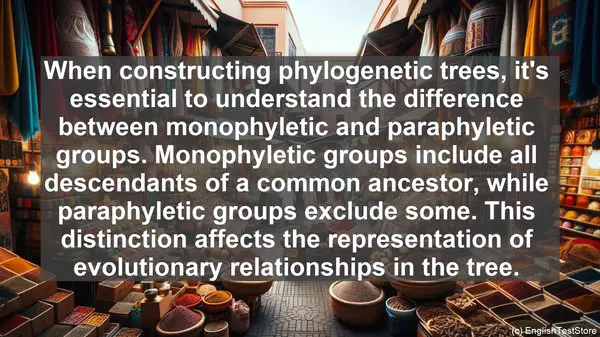Introduction: The Language of Phylogenetics
Phylogenetics, the study of evolutionary relationships, is a fascinating field. However, it comes with its fair share of complex terminology. Today, we’ll focus on the top 10 words that are often misused or misunderstood, shedding light on their true meanings and implications.
1. Homology vs. Homoplasy
Homology refers to traits shared by organisms due to common ancestry. On the other hand, homoplasy refers to similar traits that evolved independently. Distinguishing between the two is crucial for accurate phylogenetic analysis, as it impacts our understanding of evolutionary patterns.
2. Monophyletic vs. Paraphyletic
When constructing phylogenetic trees, it’s essential to understand the difference between monophyletic and paraphyletic groups. Monophyletic groups include all descendants of a common ancestor, while paraphyletic groups exclude some. This distinction affects the representation of evolutionary relationships in the tree.
3. Clade vs. Grade
Clades are groups that include an ancestor and all its descendants, forming a complete branch on the tree. Grades, on the other hand, include organisms with similar characteristics but may not share a recent common ancestor. Clades provide a more accurate representation of evolutionary history.
4. Synapomorphy vs. Symplesiomorphy
Synapomorphies are shared derived traits, indicating a common ancestor. Symplesiomorphies, on the other hand, are ancestral traits shared by multiple groups. Recognizing these traits is crucial for determining evolutionary relationships and constructing accurate phylogenetic trees.

5. Convergent Evolution vs. Divergent Evolution
Convergent evolution occurs when unrelated organisms develop similar traits due to similar selective pressures. Divergent evolution, on the other hand, leads to the development of different traits in related organisms. Understanding these processes helps us decipher the driving forces behind evolutionary change.
6. Anagenesis vs. Cladogenesis
Anagenesis refers to the gradual change within a lineage over time, without branching. Cladogenesis, on the other hand, involves the splitting of a lineage into two or more distinct branches. Both processes contribute to the overall diversity of life on Earth.
7. Maximum Parsimony vs. Maximum Likelihood
When analyzing phylogenetic data, two common methods are maximum parsimony and maximum likelihood. Maximum parsimony aims to find the tree with the fewest evolutionary changes, while maximum likelihood estimates the tree that is most likely given the observed data. Both approaches have their advantages and limitations.

8. Bootstrap Support vs. Bayesian Posterior Probability
When evaluating the reliability of a phylogenetic tree, two common measures are bootstrap support and Bayesian posterior probability. Bootstrap support assesses the stability of branches, while Bayesian posterior probability estimates the probability of a particular branch. These measures help us gauge the confidence in our tree topology.
9. Outgroup vs. Ingroup
In phylogenetic analysis, an outgroup is a taxon used to root the tree and determine the ancestral state. The ingroup, on the other hand, consists of the taxa of primary interest. Both the outgroup and ingroup play crucial roles in inferring evolutionary relationships.
10. Molecular Clock vs. Fossil Record
The molecular clock hypothesis suggests that DNA mutations occur at a relatively constant rate, allowing us to estimate divergence times. The fossil record, on the other hand, provides direct evidence of past life forms. Integrating both sources of data enhances our understanding of evolutionary history.
